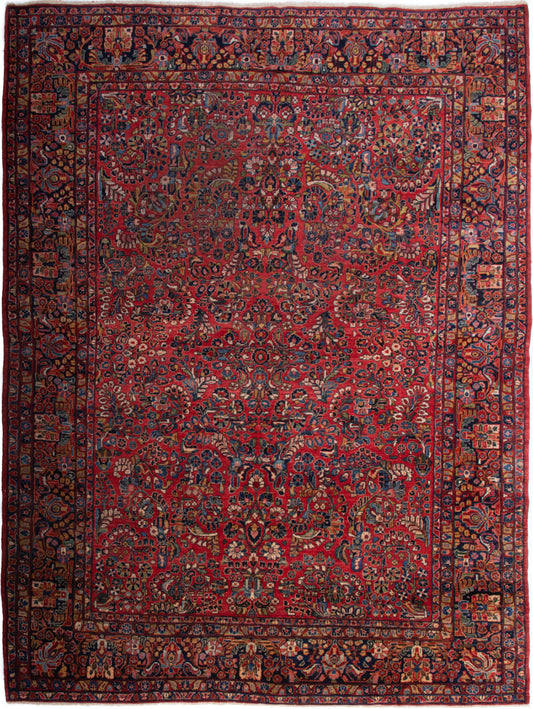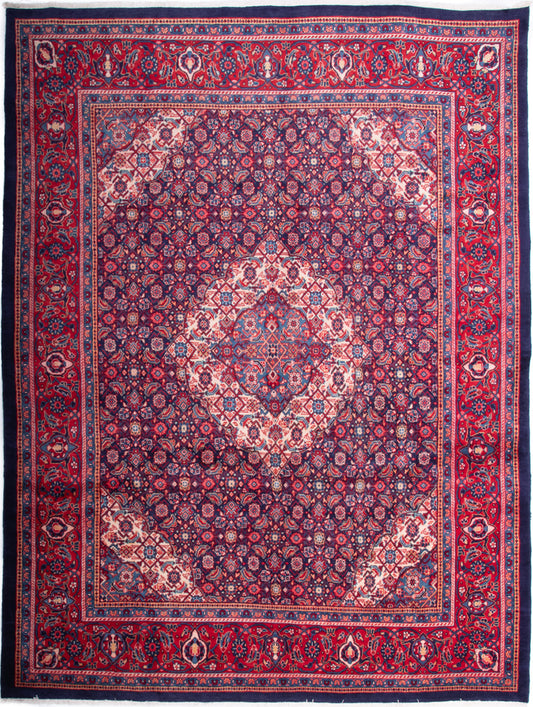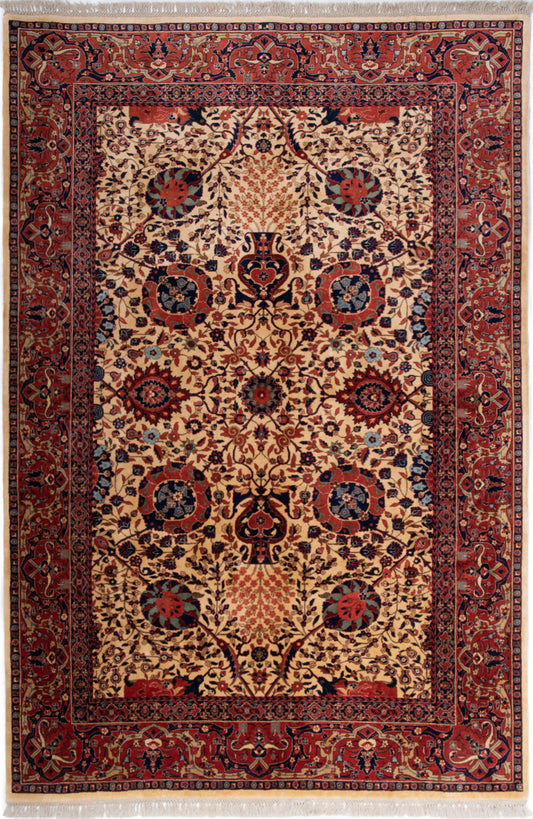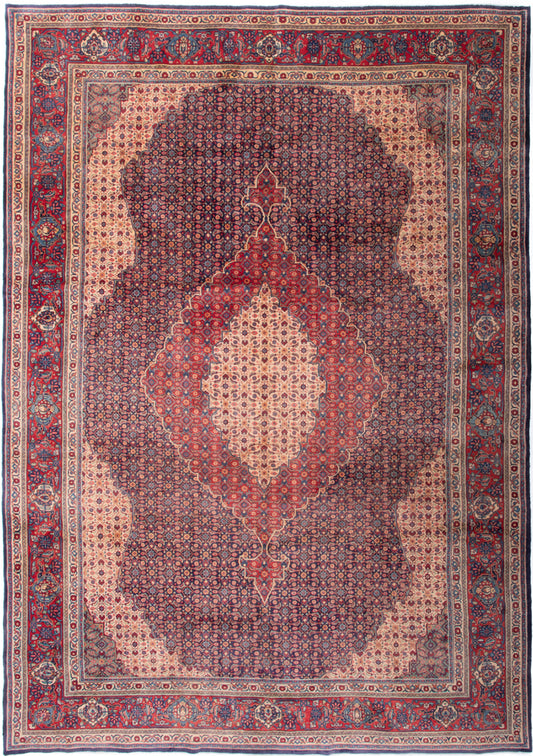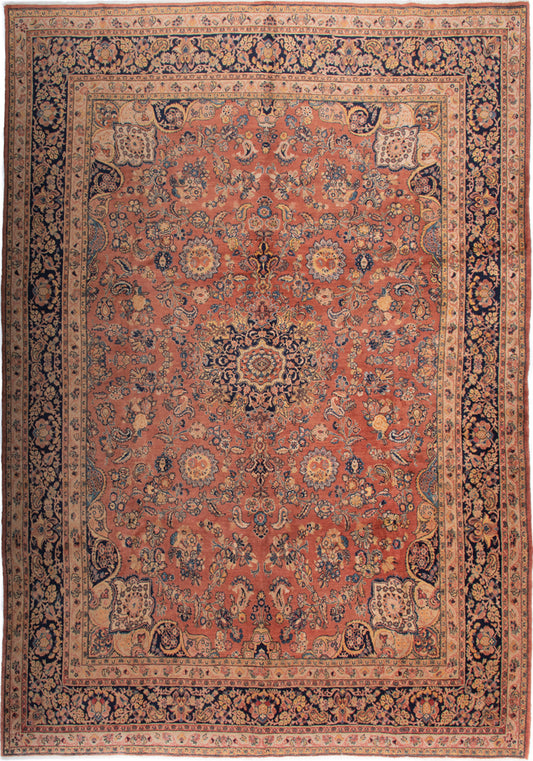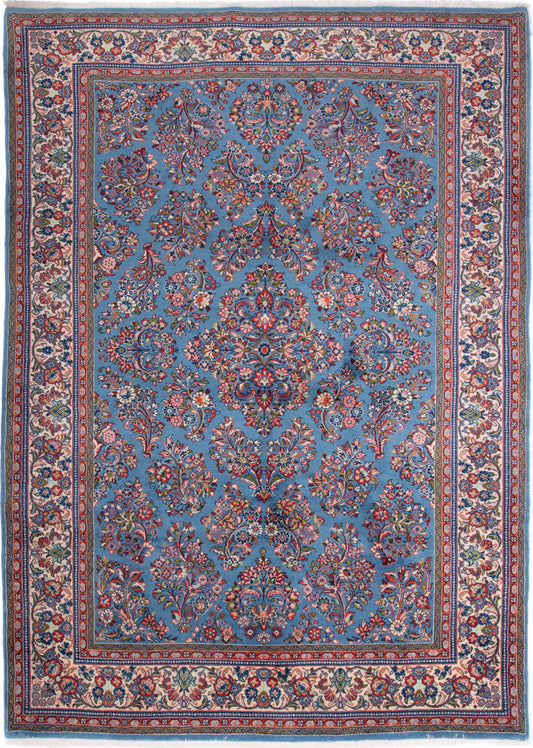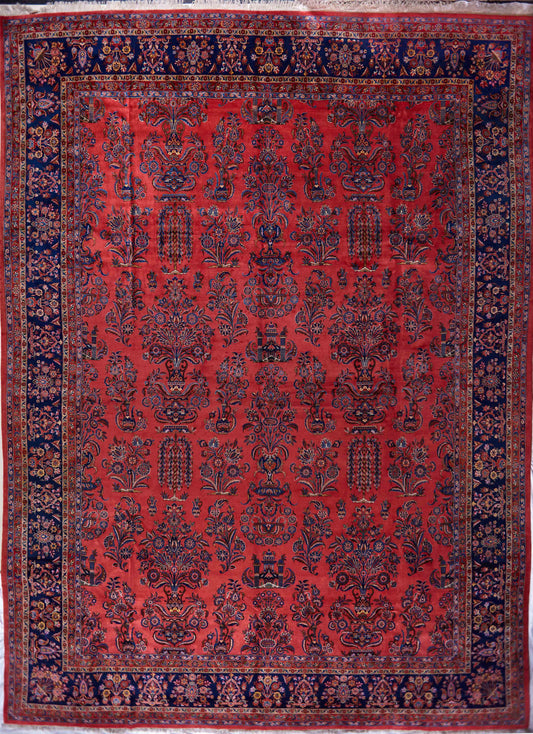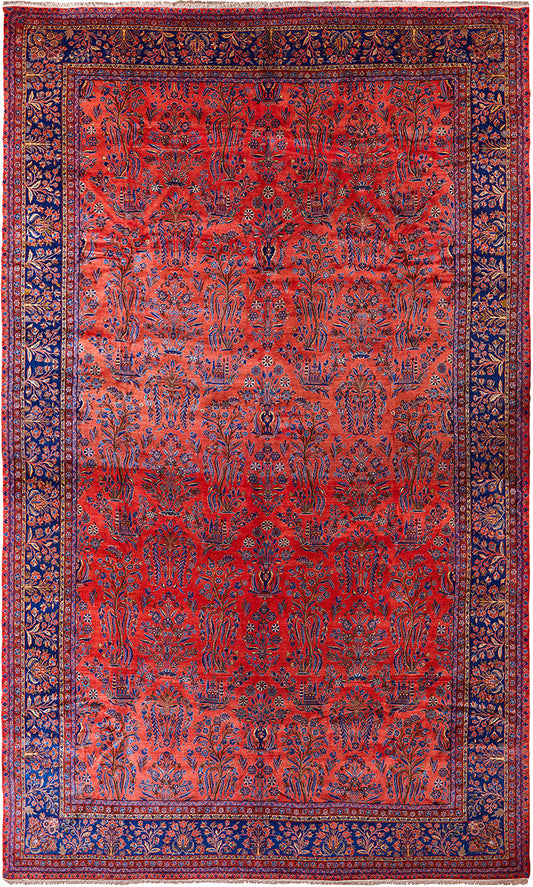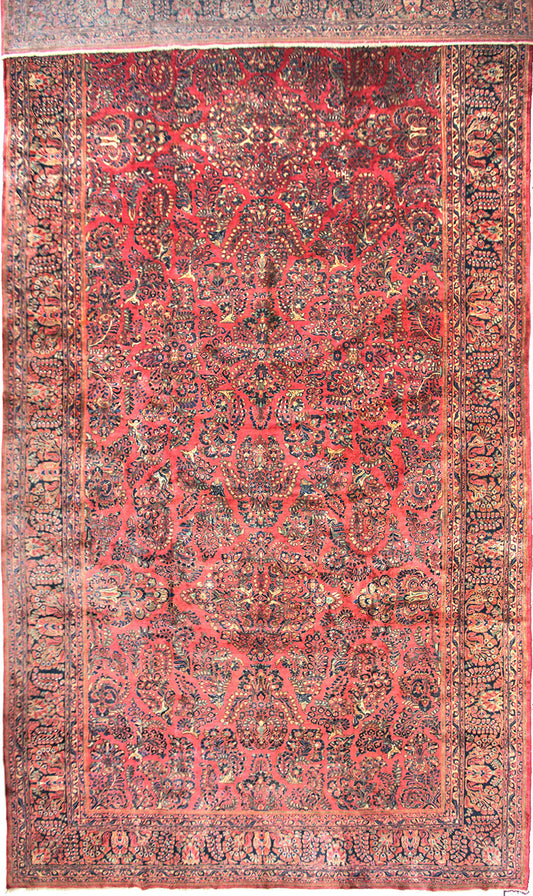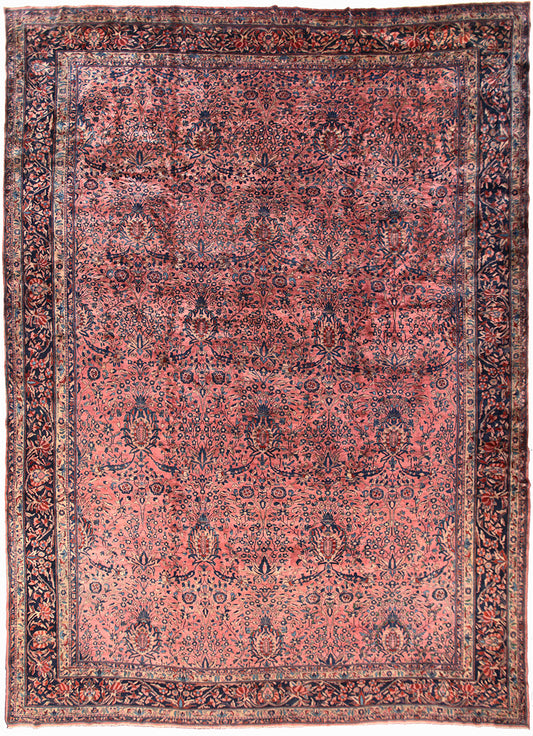Sarouk Rug History & Origin Guide
Introduction to Sarouk Rugs
Sarouk rugs originate from the village of Sarouk (or Saruq), situated in the Farahan County of the Markazi Province of Iran. Known for their exceptional quality and intricate designs, these rugs have been highly sought after by collectors and homeowners alike for centuries. Sarouk rugs are renowned for their durable construction, making them perfect for high-traffic areas in the home.
Historical Context
The production of Sarouk rugs dates back to the late 19th and early 20th centuries when the town of Sarouk experienced a surge in rug weaving. The early 20th century saw a significant increase in demand for Sarouk rugs, particularly from the American market. This period is often referred to as the "American Sarouk" era, as the weavers adapted their designs and colour schemes to cater to American tastes. The popularity of Sarouk rugs has endured, and they continue to be highly sought after for their beauty and quality.
Patterns and Motifs
Sarouk rugs typically showcase an array of floral patterns, featuring a medallion design in the centre, surrounded by floral motifs and intricate vine scrolls. The designs are often symmetrical, with a harmonious balance of colours and patterns. The colour palette of Sarouk rugs usually consists of rich, warm hues like red, blue, and ivory, which create a luxurious and inviting atmosphere.
Notable Variations
There are two primary types of Sarouk rugs: the traditional Sarouk and the American Sarouk. Traditional Sarouk rugs often feature a central medallion and an open field with floral motifs. In contrast, the American Sarouk rugs typically have an allover pattern with no central medallion and a more muted colour palette.
Farahan Sarouk Rugs: A Unique Variation
Farahan (also spelled Faraghan) Sarouk rugs are a distinct sub-category of Sarouk rugs, originating from the Farahan region in Iran. This area, nestled between the cities of Arak and Qom, has a long history of rug production, with Farahan Sarouk rugs being one of its most notable contributions to the world of Persian carpets.
Characteristics of Farahan Sarouk Rugs
While sharing similarities with traditional Sarouk rugs, Farahan Sarouk rugs have some distinguishing features that set them apart. They often showcase more intricate, delicate designs and a slightly different colour palette. The patterns found in Farahan Sarouk rugs are often more curvilinear and feature a mix of floral and geometric motifs.
The colour scheme of Farahan Sarouk rugs tends to lean towards earthy tones, with shades of green, brown, and rust being more prevalent than the rich reds and blues found in traditional Sarouk rugs. The use of these colours creates a more subdued and sophisticated appearance, which appeals to a wide range of interior design styles.
Quality and Craftsmanship
Farahan Sarouk rugs maintain the same high-quality standards and craftsmanship as their traditional counterparts. Hand-knotted with premium wool, these rugs boast a dense pile and impressive knot density, ensuring their durability and longevity. The attention to detail in the intricate patterns is a testament to the skill and artistry of the weavers from the Farahan region.
Decorating with Farahan Sarouk Rugs
The unique blend of colours and patterns in Farahan Sarouk rugs makes them a versatile choice for interior design. Their earthy tones and intricate designs can add warmth and sophistication to both traditional and contemporary spaces. Farahan Sarouk rugs are an excellent choice for those looking to incorporate a touch of Persian elegance with a slightly more subtle aesthetic.
Discover the distinct beauty of Farahan Sarouk rugs.
Materials and Construction
Sarouk rugs are hand-knotted using high-quality wool, often obtained from local sheep. The foundation of the rug consists of cotton, providing a sturdy base for the intricate patterns. Sarouk rugs are known for their dense and plush pile, making them both comfortable and durable. The high knot density, often ranging from 120 to 475 knots per square inch, contributes to the intricate designs and long-lasting nature of these rugs.
Visiting Sarouk: Travel Information
Climate
Sarouk enjoys a semi-arid climate, with hot, dry summers and cold winters. The best time to visit is during spring and autumn when temperatures are more moderate and comfortable for sightseeing.
Top Tourist Attractions
- Anaraki House: A historical house showcasing traditional Persian architecture.
- Vakil Mosque: A beautiful mosque known for its stunning tilework and ornate ceilings.
- Mahallat Spring Park: A tranquil park featuring gardens and a natural spring.
- Soltani Mosque: A historic mosque with impressive architecture and intricate designs.
- Qomrud River: A picturesque river offering scenic views and recreational activities.
Best Places to Stay
While Sarouk itself may have limited accommodation options, nearby cities such as Arak and Qom offer a range of hotels and guesthouses to suit various budgets and preferences. Some popular choices include the Parsian Azadi Hotel, the Jamshid Hotel, and the Khorshid Hotel in Arak. In Qom, travellers can choose from the Qom International Hotel, Al Zahra Hotel, or the Darolfonoon Traditional Hotel for a more authentic experience.
Exploring the World of Sarouk Rugs
Sarouk rugs are a testament to the skill and artistry of Iranian weavers. Their intricate patterns, rich colours, and exceptional quality make them an exquisite addition to any home. By understanding the history, techniques, and cultural significance of these rugs, you can truly appreciate the value and beauty they bring.
Discover our stunning collection of Sarouk rugs and experience the elegance and craftsmanship for yourself. Browse our selection of one-of-a-kind Sarouk rugs and add centuries of artistic style to your home today.
Browse Our Current Selection of Sarouk Rugs
-
Persian Sarouk Hall Runner Rug
Regular price £1,025.00Regular priceUnit price per -
Persian Sarouk Hall Runner Rug
Regular price £1,095.00Regular priceUnit price per -
Antique Persian Sarouk Rug
Regular price £5,975.00Regular priceUnit price per -
Semi-Antique Persian Sarouk Rug
Regular price £2,395.00Regular priceUnit price per -
Semi-Antique Persian Sarouk Rug
Regular price £4,975.00Regular priceUnit price per -
Semi-Antique Persian Sarouk Rug
Regular price £5,745.00Regular priceUnit price per -
Antique Persian Sarouk Rug
Regular price £11,975.00Regular priceUnit price per -
Persian Sarouk Rug
Regular price £2,395.00Regular priceUnit price per -
Persian Sarouk Rug
Regular price £81,600.00Regular priceUnit price per -
Persian 'American Sarouk' Rug
Regular price £91,200.00Regular priceUnit price per -
Persian Sarouk Rug
Regular price £38,160.00Regular priceUnit price per -
Persian Sarouk Rug
Regular price £30,000.00Regular priceUnit price per



